
Getting a praying mantis as a pet may sound like a difficult task, but I consider mantises low-maintenance pets. Once you have gotten the mantis used to its new home, it is a very enriching experience to care for a praying mantis as well as observe them. Read on to learn how to take care of a praying mantis.
Getting Your Mantis
Finding and Catching a Mantis

- Before you start to take care of a praying mantis, look up and research what species of mantis live in your area state (or region). This is so you know what to look for and where.
- As an alternative method, you can purchase a mantis egg sac (AKA ootheca) online. Once they hatch, you can keep a few to raise. You will need to feed them small prey, like aphids or fruit flies, which may be difficult. You can read more here on how to take care of baby mantises.
- Bring supplies like a net and something to hold the mantis in, like a jar or a container.
- Try to look in places that mantids like to hide in, like bushes, trees, or shrubs.
- Don’t be disappointed if you don’t find a mantis. They are very hard to spot and maybe the mantid population in your particular area is not very high, especially during the cooler months like fall and winter.
- if you find a praying mantis, use your net to catch it and put it in the jar. if you want to be extra bold, you can use the jar.
- Be careful when catching the mantis. They will try to flee and it might attempt to fly away. Try to sneak up on it and catch it with the net. If you move faster than it, you will be able to catch it unawares.
- If you caught a praying mantis, congratulations! You have now captured your new pet.
Buying a Mantis
If you prefer an easier method of getting a praying mantis, you can purchase a mantis egg sac online. Either that or purchase a full-grown mantis. It is best if you do your research so you may purchase a mantis from a reputable seller. I think forum sites like Arachnoboards and other forum websites with fellow insect enthusiasts. I encourage you to do a lot of research once you’ve decided on the mantis species you want. Some of them are tropical species and require special climates and a certain percentage of humidity. For a beginner species, I recommend the European mantis since it is well-suited for most climates in North America.
Enclosure Set Up
Enclosure
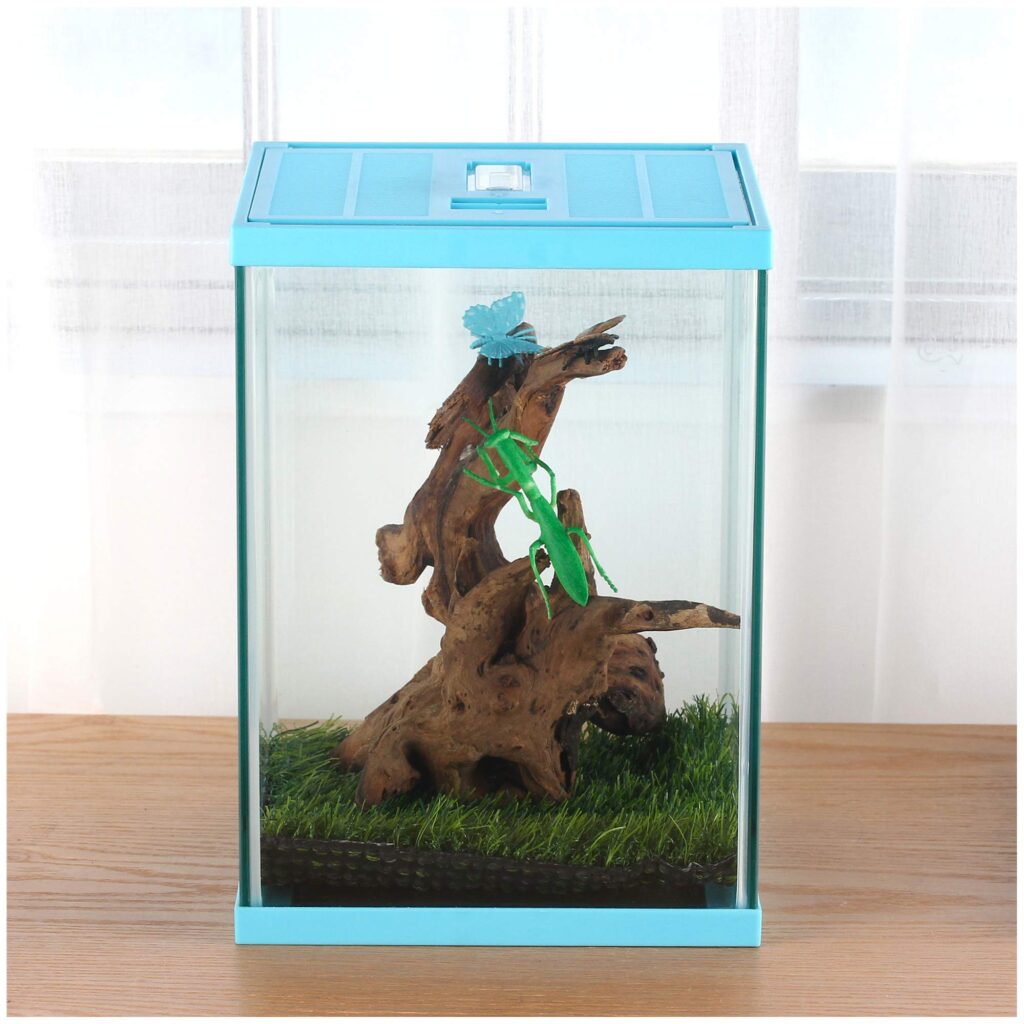
Once you have your new mantis, you need a place to house it. It does not need a fancy enclosure. Its enclosure can be a jar, a bug tank, or a container. As long as it has proper ventilation like mesh or holes, it is an ideal habitat. You need to make sure that it is the right size as well. To make it simple, a mantis tank that is three times the mantid’s height, and three times its width will suffice. It also needs something to hang onto, like a sturdy stick. I like to put in 2-3 sticks that crisscross each other. If you have dirt or substrate on the ground, it will help keep the sticks propped up. Now your mantid is ready to be put in its new perfect home! A mantid’s enclosure can be cleaned at least once or twice a month.
Tools You Need
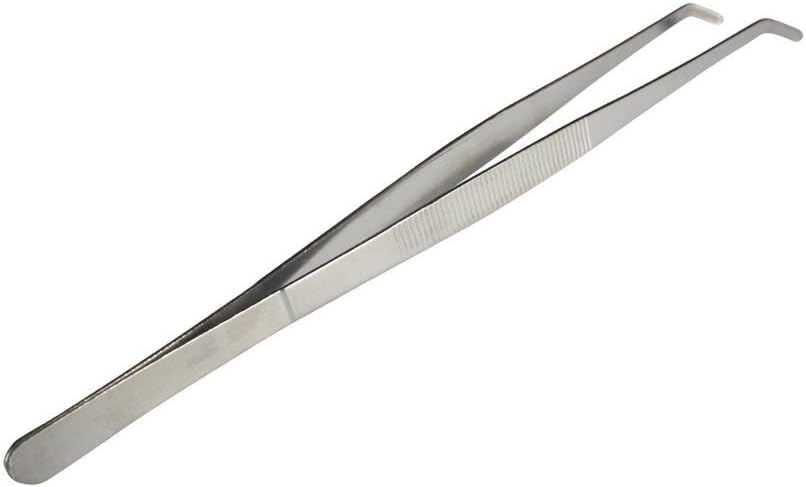
When I take care of my mantis, I have specific tools I use.
- Tweezer – It helps grip prey to feed to the mantis. You may also use it to pick up any partially eaten insects that the mantid may have left scattered on the ground. It also helps you guide the mantis to where you want it to go if you are squeamish about touching it. This brand of tweezer is my favorite one to use.
- Spray Bottle – You can use a spray bottle to mist the mantis every 3-4 days. This helps the mantis drink. The mantis will drink the droplets of its forelegs. They can drink out of things like bottle caps by stooping and crouching, but the prior option is better for them.
- Magnifying Glass – This will help you observe the mantid up close and personal.
- Holding Container – You can use this when you need to transport the mantis in order to clean its tank.
What Do Praying Mantis Eat?
Feeding
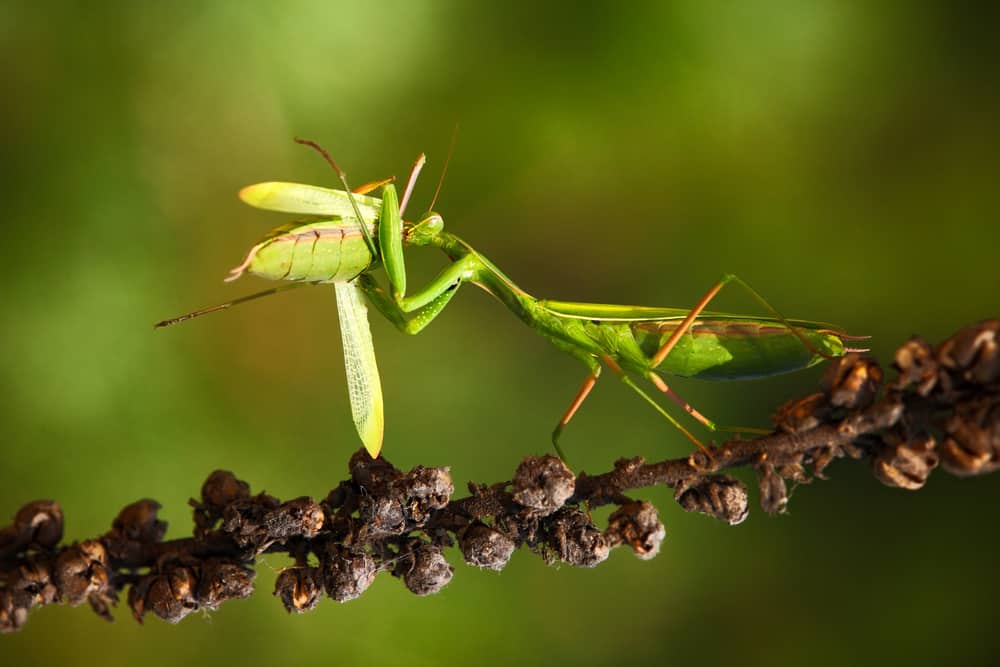
Mantis care requires feeding the mantis. It’s best to feed a mantis 1-2 times a week. You mustn’t feed it too often, or this will result in it speedrunning the molting process, which is not good for the mantis. This can result in more ‘bad molts’ where they get disfigured and become more weak and sickly. Make sure not to overfeed your mantis by not feeding it every day, as well as not bulk feeding it a lot of food for one day.
Mantises only eat live insects. They will not eat dead insects, especially old dried dead insects. It is extremely fascinating to watch a mantis stalk an insect, almost akin to a cat stalking a bird. A mantis has a voracious appetite and is an ambitious hunter. The best way to gauge how big prey should be for a mantis is to get prey about the size of its head. Preferably not something bigger. I’d recommend not capturing stinging insects like bees or wasps since they might hurt you or even the mantis. I will list the ideal kind of prey items for mantids.
Best Prey Items For Your Mantis
Cricket
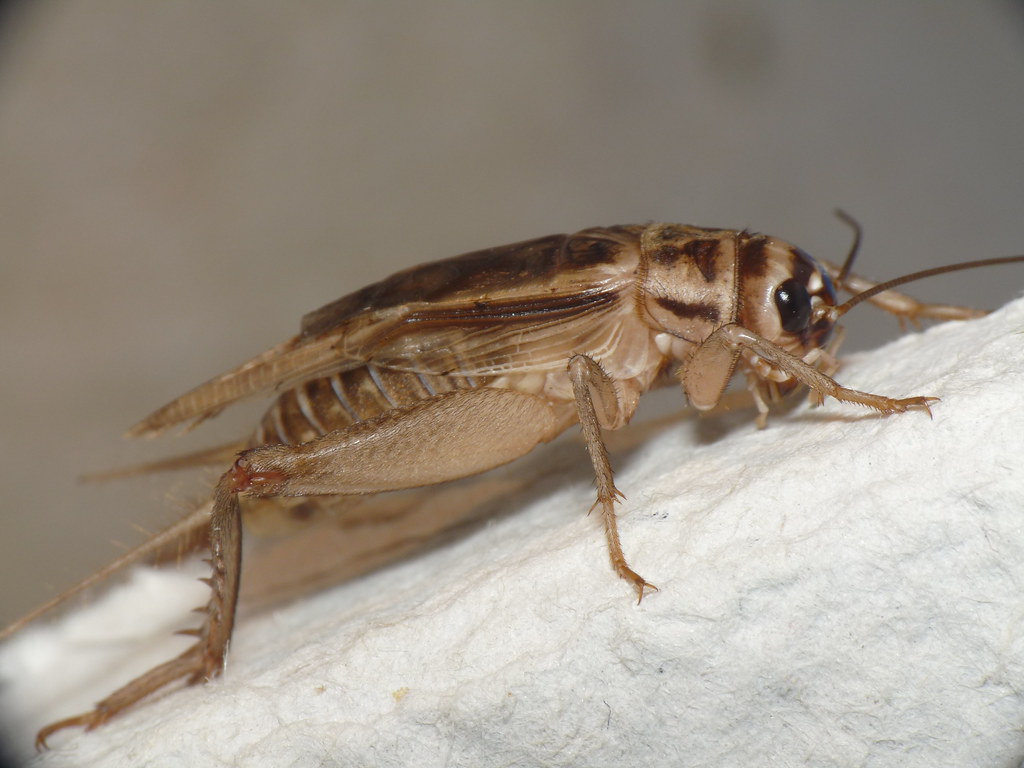
Crickets are the best kind of prey for mantises. When it comes to my mantis care, I will typically buy feeder crickets from my local petstore. I will order 10-15 crickets and keep them in a separate container with their own food (lettuce) and water. In other words, I gut load the crickets. Gut loading is a term for giving the crickets lots of food until their stomach are practically bursting. This is great because if the crickets eat healthy food, the mantis will get the nutrients as well when it devours it. The crickets are a lot more nutritious for the mantis. If you do not want to take care of crickets, you can catch a wild cricket. Just make sure it has not been exposed to bug poison. If the cricket is sluggish and doesn’t hop away, leave it alone. Try to find them where it is further away from human development where there is less of a chance of pesticide exposure.
Grasshoppers
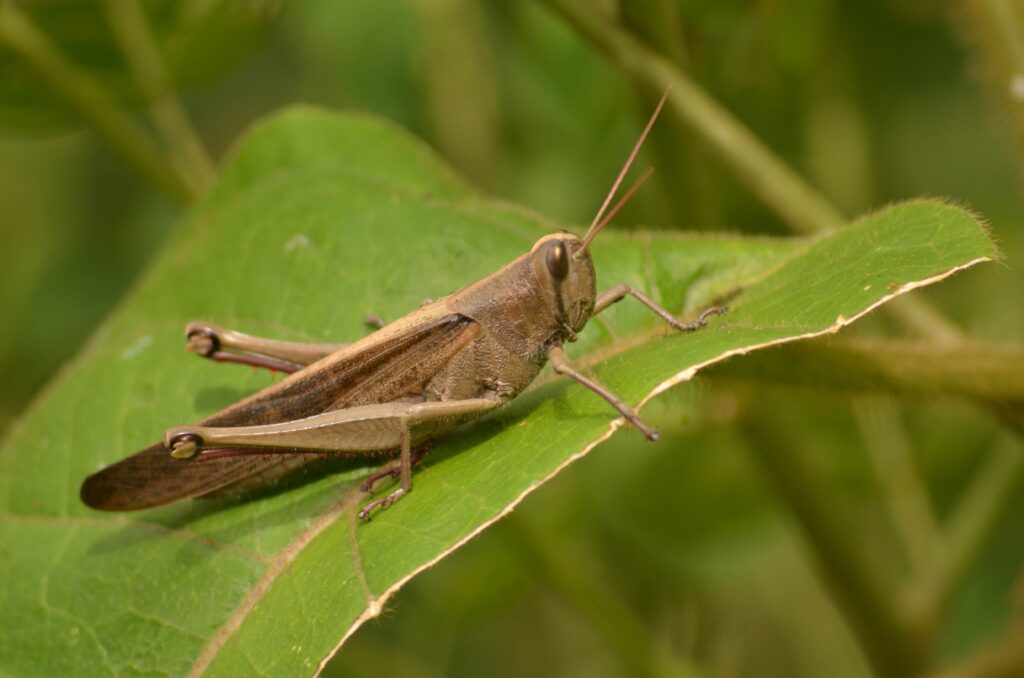
Grasshoppers are like crickets and mantises will eagerly eat them. You can find them in shrubs or fields. Just make sure it isn’t too big for the mantis. The best approach is to have a net and sneak up on them from behind. Or use your bare hands.
Moth
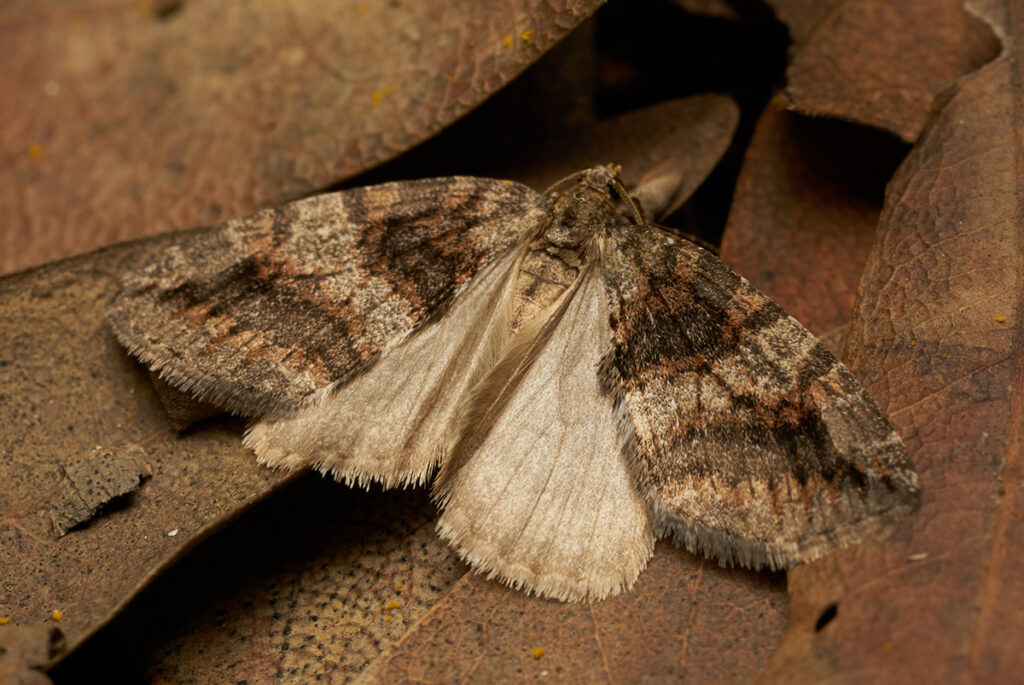
Moths are a great source of food for mantids. Their fluttering movements attract them and get their attention quickly. They are also easy for your mantis to catch. You just have to wait at night by a light source and you will likely encounter a moth to give the mantis for dinner.
Fly
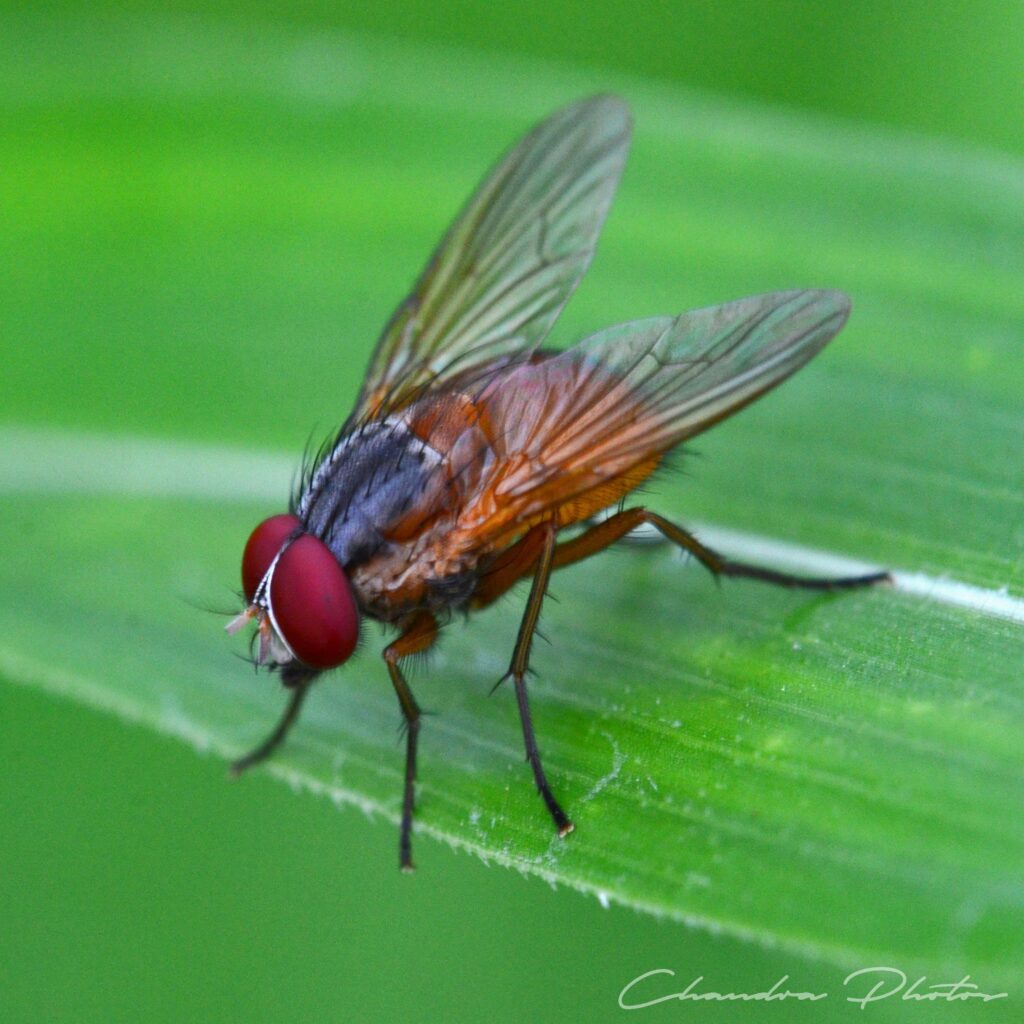
Flies are excellent sources of food for mantises. They are also easy to find. Try to catch a fly with a net when it lands. When you do, spray the fly several times with a spray bottle. This will dampen its’ wings and prevent it from flying away from you. Toss it into the mantis tank. once the fly’s wings dry, its buzzing and zipping around will attract the mantis’s attention and you can watch it hunt.
How Long Do Praying Mantis Live?
A praying mantis’s lifespan may vary depending on the species and their living conditions. Most wild mantis species can live 4-6 months. Other smaller species may only live for a month or so. If you own a praying mantis as a pet, you can expect larger species to live up to 2 years! If you give a praying mantis quality care by providing food, water, and a warm environment, you can expect your mantis to live a long and happy life.
Conclusion
I hope that you found this information helpful and useful. Maybe it will inspire you to get a mantid as a pet to observe and admire with your kids. If you are interested, here are some free printable worksheets about mantises that will make learning about them even more fun!
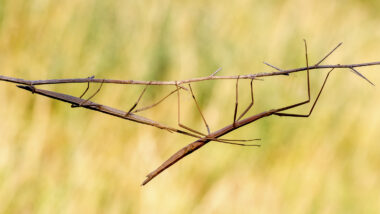

Pingback: Learn About Mantids - Bug Bushel
Pingback: Praying Mantis Fun Facts - Bug Bushel